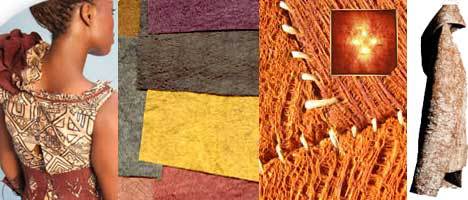 Loading... Please wait...
Loading... Please wait...- Call us on
- Gift Certificates
- Wish Lists
- My Account
- 0.00
Categories
Bark Cloth – Ancient Tradition Meets Modern Design
Posted on 9th Jun 2015
One of the oldest textiles known to man, bark cloth is handcrafted from the bark of certain species of trees which are soaked in water and beaten until they form sheets of fabric. Unlike virtually all other textiles, it is neither woven nor knit. Tree bark fleece from Uganda is said to be the most ancient textile in the history of humanity, the direct ancestor of nowadays non-woven textiles.
Today’s bark cloth is cultivated from Mutuba trees on eco-certified farms in Uganda. As 100% plant fiber, this is an authentic organic “living” cloth at the interface between textiles and wood. The permanently renewable bark is harvested every year without felling the tree. One piece of bark cloth is is made from the bark of exactly one tree. Therefore, each cloth is a unique specimen, telling you it’s own particular story— a simple and timeless beauty.

In 2005, UNESCO declared the artisan production process of bark cloth a “Masterpiece of Oral and Intangible Cultural Heritage”, and just three years later it was admitted onto the list of Immaterial World Cultural Heritage. Bark cloth comes into being through a traditional, labor intensive, manual process. Depending on lighting conditions, angle of viewing, treatment method, and temperament of its producer the soft, moldable material changes from the supple, but robust charm of leather to the translucent and graceful lightness of filmy fleeces. Designers value its expressive character, unique texture and sensual tactility.
Bark cloth is an ahead-of-its-time material for purists who concentrate style and design down to the bare essentials. The cloth’s allure comes from its inimitable structure, a game played between its three-dimensional surface and its transparent character. The combination of archaic authenticity, state-of-the-art textile finishes, and modern range of uses yields a convincing, inimitable effect. No matter for which application it is used, you are sure to possess a unique masterpiece.